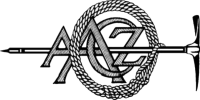- Home
- Nepal
- Adventure Activities
- Peak Climbing
- Mountain Expedition
- Local Tours
- Sirubari Village Homestay
- Ghale Gaun
- Kalinchowk Tour
- Halesi Mahadev - Maratika Cave package
- Chitwan Jungle Safari
- Day tour in Kirtipur
- Day tour in Kathmandu City
- Spiritual Tour to Muktinath
- Chitlang and Kulekhani
- Bardiya National Park
- Jeep Tour to Rara Lake
- Gosaikunda Lake
- Manakamana day Tour with cable-car ride
- 4WD Jeep Tour to Upper Mustang
- Family Holidays
- Heli & Mountain Flights
- Trekking Routes
- Kailash Mansarovar
- Bhutan
- Tibet
- Multi Country
- Domestic Flights
- Contact
- Home
- Nepal
- Adventure Activities
- Peak Climbing
- Mountain Expedition
- Local Tours
- Sirubari Village Homestay
- Ghale Gaun
- Kalinchowk Tour
- Halesi Mahadev - Maratika Cave package
- Chitwan Jungle Safari
- Day tour in Kirtipur
- Day tour in Kathmandu City
- Spiritual Tour to Muktinath
- Chitlang and Kulekhani
- Bardiya National Park
- Jeep Tour to Rara Lake
- Gosaikunda Lake
- Manakamana day Tour with cable-car ride
- 4WD Jeep Tour to Upper Mustang
- Family Holidays
- Heli & Mountain Flights
- Trekking Routes
- Kailash Mansarovar
- Bhutan
- Tibet
- Multi Country
- Domestic Flights
- Contact
Lower Dolpa Trek
An exciting Trekking experience
Lower Dolpo Trek is one of the most exciting and challenging treks situated in the western hills of Nepal, which allows the trekkers to experience the real adventures of trekking on an off-the-beaten path, composed of steep sloppy hills. Lower Dolpo Trek is packed with amazing gifts of nature, including Shey Phoksundo Lake and also boasts of the pre-Buddhism Bon Po culture.
2 - 19
Detailed Itinerary
- Day 01: Arrival in Kathmandu
Upon your arrival at Kathmandu Airport, we will meet you at the airport and escort you to your hotel. - Day 02: Kathmandu to Nepalgunj
From Kathmandu, we take a bus or fly to Nepalgunj. Nepalgunj , a town in the western Terai , is very close to the Indian border and the Bardia Nationl Park - Day 03: Nepalgunj to Juphal/ flight and trek to Dunai
Today we take a 35 minutes long flight to Juphal .Our trekking starts from Juphal .The trail descends and winds through local villages. We trek by the riverside and pass Roop Ghar with the water mill and finally reach the village of Dunai(2150m) - Day 04: Dunai to Tarakot
From Dunai the trail continues along the banks of Barbung Khola to Tarakot, known locally as Dzong for its hilltop fortress. - Day 05: Tarakot to Mushi Khola
From Tarakot we trek to Musi Kharka. We camp for the night at a large meadow. - Day 06: Musi Khola to Karkot Village
From Musi Kharka we trek for about 6 to 7 hours and reach the village of Kakoat. On the way we pass through interesting scenery. - Day 07: Karkot Village to Pimari Village
From Kakoat village we trek to Pimari village. - Day 08: Pimari Village to Shabha kharka
Today we pass through forests of pine, birch and juniper to reach Shabha Kharka, a grazing site. - Day 09: Shabha kharka to Papta Chanla BC
We make an arduous trek to Papta Chanla BC today. - Day 10: Papta to Dho Takyo village Crossing Chanla Pass/ (5200m)
This day we come across several villages,while walking along the bank of Tarap Khola. We pass many chortens, monasteries, mani walls, prayer flags fluttering in the breeze and local people who are very close to Tibetan life style. We reach Dho Takyo village our camp for the night.It is the uppermost village of the Tarap region. - Day 11: Dho Takyo Village- Rest day
Dho Takyo is a Gurung village rich in Buddhist culture. We find beautiful monasteries, chortens, mani walls and prayer flags. We spend the day exploring these sites. It is worth visiting all the gompas. It is the largest settlement in Tarap. Of special interest is the Ri Bhunpa Gompa and the chorten within a chorten. - Day 12: Dho Takyo Village to Numala Base Camp
We trek through arid country with wonderful eroded pillars. If it is clear there are views of the Dhaulagiri massif, north of high desert country towards Tibet and down into the Tarap valley. You trek along the steep ascent path crossing grassland until you reach Numala base camp. - Day 13: Numala BC to Danigar (4512m) Crossing Numala Pass (5190m) and Bagala BC
Today we cross Numala Pass and descend towards Poyon khola till we reach Bagala Base Camp surrounded by big glaciers and blade shaped rock cliffs. We stop for the night at Danigar, a place surrounded by hills with temporary houses, yak pasture and terraces. For the first time you can see Topo Peak (4900m.) in panorama. The Norbukang Himal sparkles at the back. - Day 14: Danigar to Yak kharka (3995m) Crossing Bagala pass (5070m)
We make our way to Yak Kharka via Bagala Pass. From the pass we get to enjoy the beautiful view of Kanjiroba massif. After Baga La the trails turn gentle down all the way to Yak Kharka. Yak Kharka is open grassland and grazing ground for yaks and sheep. - Day 15: Yak Kharka to Rigmo Phoksundo Lake (3610m)
From Yak Kharka till Ringmo the trail goes down hill. We move along the flat land passing through pine forests, grassland, terraces, hills and villages. The views of Phoksundo Lake appear before you. After crossing a wooden bridge we reach our destination. Phoksundo Lake is the deepest lake of the world. - Day 16: Phoksundo – Rest Day
Today we explore the area around the magnificent Phoksundo Lake. The lake is famous for its magnificent turquoise color and spectacular scenery. We will explore the natural sites and enjoy our nature tour. - Day 17: Phoksundo to Pugmo Village (3500m)
Today we follow a trail that stays high above the stream, which eventually becomes the Pungmo khola. The route enters birch and juniper forests. It gives way to blue pine as the trail crosses the river on a wooden bridge. There are views of the Kanjiroba peak in the horizon above the barley fields of Pungmo, a fortress like village. - Day 18: Pungmo Village to Kagmara High Camp (4800m)
From Pungmo village we take the route on the side of the Pungmo khola. We pass birch and juniper forests and blue pine trees. - Day 19: Kagmara High Camp to Kagmara Phedi (4190m) Crossing Kagmara pass (5115m)
We climb alongside the Kagmara Glacier to the Kagmara La at 5115m.The panoramic views of the peaks are sensational. Wildflowers and exotic birds and blue sheep dot the landscape. - Day 20: Kagmara Phedi to Toijum (2920m)
From Kagmara phedi we trek to Toijum. We cross a series of waterfalls and descend a moraine. Till we reach Garpung Khola.From here the village is just nearby. We camp near the army post. - Day 21: Toijum to Kaigaon (2610m)
We take a high trail above the Bheri River. We pass Hurikot and reach Kaigaon. - Day 22: Kaigaon Village to Chaurikot (3700m)
We climb on a grassy knoll for a panoramic view east to the distant Dhaulagiri Himal.We reach Chaurikot our camp for the night. - Day 23: Churikot to Chotra (3380m)
Chotra lies at a distance beyond Chaurikot. The inhabitants of Chotra are Khampas, people from eastern Tibet who are traditionally Buddhists. The village has the typical Tibetan Mani walls and a kani arching over the trail. - Day 24: Chotra to Gothichaur (2650m)
From Chotra we trek to Ghotichaur. We trek through completely flat land. En route you see terraces, pass forests and villages situated at the bank of river. There are some 13th century Malla dynasty stone carvings at the spring here. - Day 25: Gothichaur to Jumla Khalanga Bazaar (2540m)
We trek from Gothi Chaur (3080m.) to Jumla. The trails we follow are steep ascent up to Pattyata Lagna Pass. To reach Jumla, we pass Dochar Gara and follow the flat route to Gariakot. - Day 26: Jumla to Nepalgunj/ flight
Today we fly from Jumla to Nepalganj and then back to Kathmandu. - Day 27: Depart Kathmandu
We will drive you to the airport for your flight home.
This trip can be redesigned or redeveloped as per your taste, For more information please e-mail us at This email address is being protected from spambots. You need JavaScript enabled to view it.
Cost and dates
We do small group trek or private trip as your request.
For quick information / contact us at whatsapp/viber + 977 9841815039
Or Drop us inquiry at This email address is being protected from spambots. You need JavaScript enabled to view it.
Frequently Asked Questions
It is always a good idea to involve yourself in doing physical exercises before trekking. Not that you have to be all athletic and muscular to trek. An average level of physical fitness will make the journey less stressful.
Availability of drinking water is not the problem. The problem is the cost of it at higher altitude. As you gain height, the price of water rises up to 2-3$ per liter.An alternative way of getting drinking water is by having your water bottles filled in tea houses. Tea houses will provide you boiled water for about 1$ per liter. They are completely safe for drinking.
Food is not of any concern while trekking. You will get all kinds of cuisines. For breakfast, tea houses will provide you with eggs cooked in your preferred style along with pan cakes, bread butter, roti, and so on.Various other dishes like pizza, pasta, momo, chowmein and many more are also available. The most preferred dish is Dal Bhaat. It is a typical Nepali meal. Rice is served with vegetable curry, lentils, tomato chutney and meat curry.
Trekking is an extreme sport and does come with a lot of risks. Some unavoidable risks are avalanche, heavy rainfall, earthquake, landslide and other such natural calamities.You might fall and injure yourself or catch some viral flue. The deadliest risk of trekking is AMS or Acute Mountain Sickness. This sickness occurs when a great altitude is gained and the body fails to adjust to the changing pressures associated with it. Anyone can fall a victim of the sickness and if not treated in time, it can be fatal.
There is no such hard and fast rule that you must have one. But it is highly advisable to travel with them. Some of the treks cannot be trekked without a guide most of them are the restricted ones.
Visit us
-
JP Marga, Thamel, Kathmandu, Nepal
-
+977-01-5365371
-
+977 98418-15039
(Whats App, Viber & Telegram)








